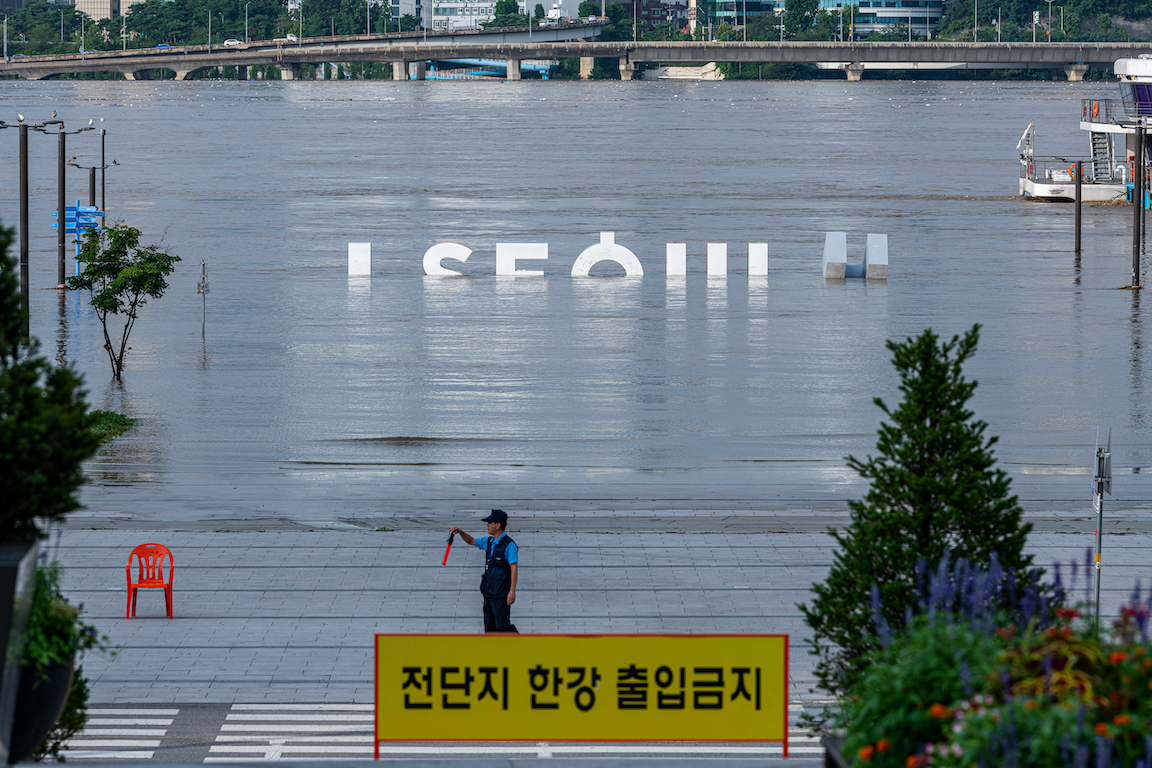4 Mins Read
By Jiseok Kim, climate and energy specialist, Greenpeace East Asia
Another summer has come and it is not going away quietly without yet another round of extreme weather events. From Asia to Europe and the Americas, the headlines related to heatwaves, flooding, and forest fires reflected the attention of the media.
People are used to thinking that occasional heat waves, crop failure, and flooding are just small prices to pay while our current lifestyle of maintaining prosperity is still key. On the other hand, warnings from scientists that extreme weather is getting worse and adding costs to our lives were repeated constantly. If alarms of experts turn to positive storytelling: the number of lives that are equivalent to the entire population of Germany can be saved. Will people change their minds on tackling climate change?
Recently, research titled The mortality cost of carbon estimated the cost of carbon in relation to deaths pertaining to direct heat due to rising carbon emissions was published in a renowned science journal Nature Communication. According to the research by R. Daniel Bressler, a doctorate student at Columbia University’s Earth Institute, about 83 million people were expected to lose their lives due to the excessive heat caused by carbon emissions between 2020 and 2100, which is almost 20 times higher than the 4.22 million deaths due to COVID-19 as of 2 August. This translates to the social cost of carbon at US$258 per ton. It is four times more than the price of carbon emission allowance currently trading in the European market.
The same research suggests that the number of heat-related deaths can be reduced to 9 million during the same period if rapid carbon emission reduction through transitioning to means such as renewable energy, EVs, and plant-based diets are achieved. Nine million additional deaths over the next 80 years is still a staggering number, but it also means 74 million lives will be spared. Adding to this result are less flooding, forest fires, and the loss of crops.
In June, Canada and the US experienced a monstrous heat wave that resulted in over 700 deaths. On average, the high temperature in Lytton, a small town in western Canada, was 24.3 degrees celsius. But the temperature rose to 49.6 degrees celsius on 29 June and caught many people off guard. The next day, over 90 percent of the town was burnt down by a fire, a typical natural disaster that comes with a heatwave. Many parts of Europe and Asia also suffered from strong heat waves. In Japan, some of the summer Olympics events had to be rescheduled to reduce strain on athletes.
Hundreds of forest fires have been burning in Canada and the US. Bootleg fire, the largest wildfire in the US as of 2 August, has burnt down 1,674km2 of forest, an area 1.5 times larger than Hong Kong. In remote Siberia, a sparsely populated territory covered with frozen land has been scorching with high temperatures followed by forest fire since late May as well, filling the air with hazardous dust that makes people sick. The Russian army has been deployed to help the firefighting, yet it is unclear how quickly the situation will be mitigated given its large scale. Multiple large fires blazed through many parts of Mediterranean regions, such as Turkey and Greece.
European countries, especially Germany and Belgium, suffered from devastating flooding caused by an unusual amount of rainfall that fell between 12 and 15 July. Rivers swelled up, took over roads, and brought down houses. Over 200 deaths have been confirmed and nearly 200 people are still missing. In China, Zhengzhou also suffered from a deadly flood due to heavy rainfall on 21 July. The amount of rainfall on the day was 620mm, which was almost identical to the annual rainfall (644mm) of the region. Japan also experienced a large-scale landslide in the coastal city of Atami on 3 July and serious flooding in several prefectures, including Kagoshima on 11 July, due to torrential rain.
While some suffered from too much rain, drought was causing serious problems in other parts of the world. In April, Taiwanese farmers were asked to give up rice farming so water can be supplied to semiconductor manufacturing plants. Farmers in many countries were experiencing problems like reduced crop yield, which led to a lower food supply and higher food prices. For example, North Dakota, a leading spring wheat-producing state in the US, is expecting 41% less yield. Some activities, such as rice and almond farming in California, also didn’t happen because their water supply has been cut.
The summer is lasting longer due to climate change but it will eventually end as it always has. But the marks of extreme weather will continue to linger. The total area of forest will be diminished. Some people will have lost their loved ones. The traumatic experience of losing homes will continue making thousands of people suffer over a long period of time. Above all, the more expensive food will give double blows to those who are underprivileged.
Many of us will forget what happened this summer over time. Yet, leaders in government and large corporations should remember to prevent human-made sufferings and ensure a safe living environment by taking collective actions to tackle climate change.
Lead image courtesy of © Sungwoo Lee / Greenpeace.



